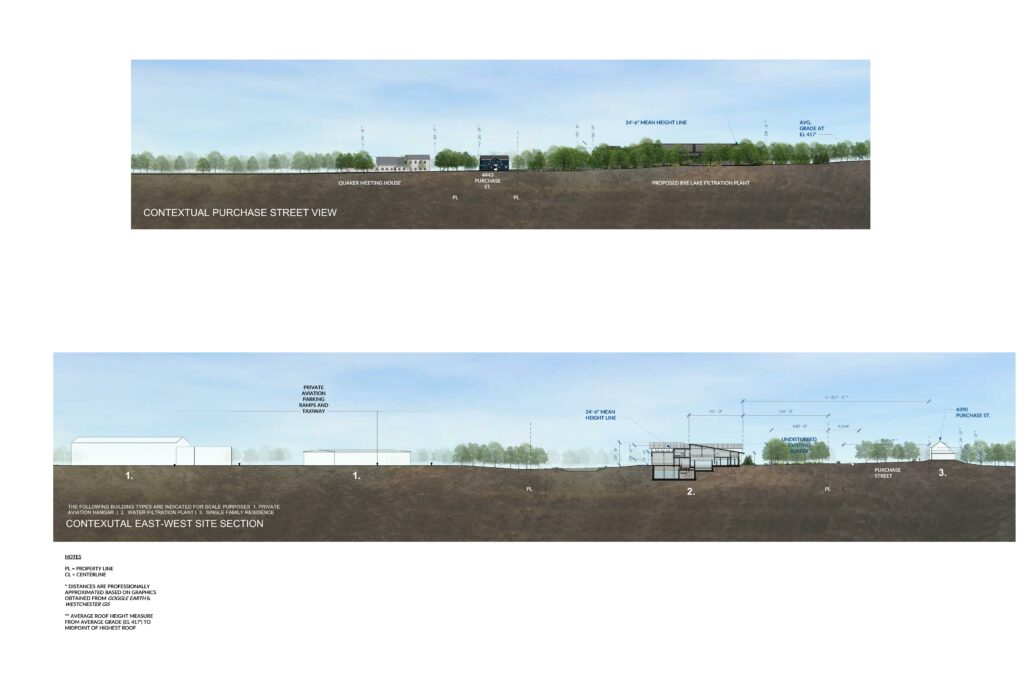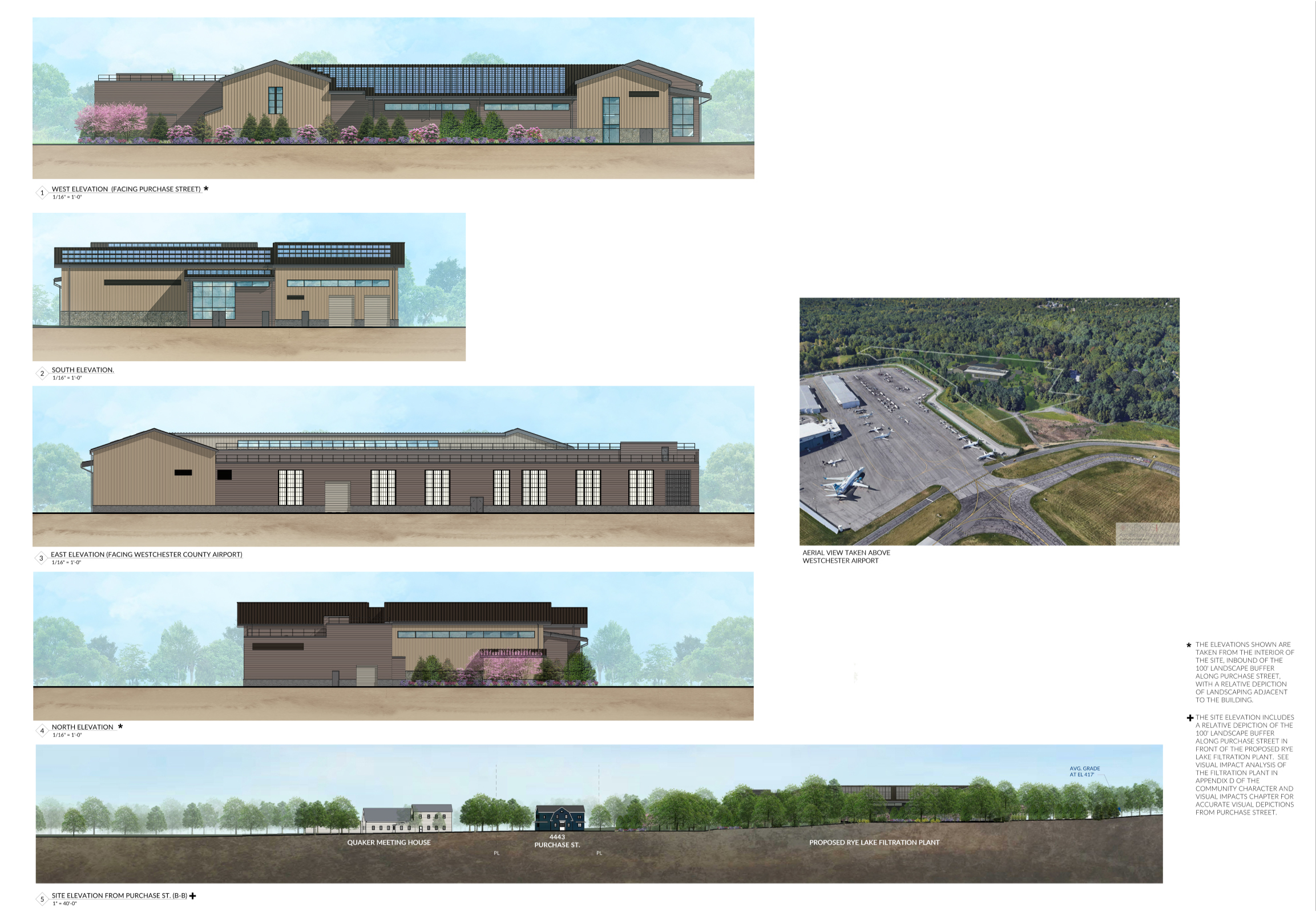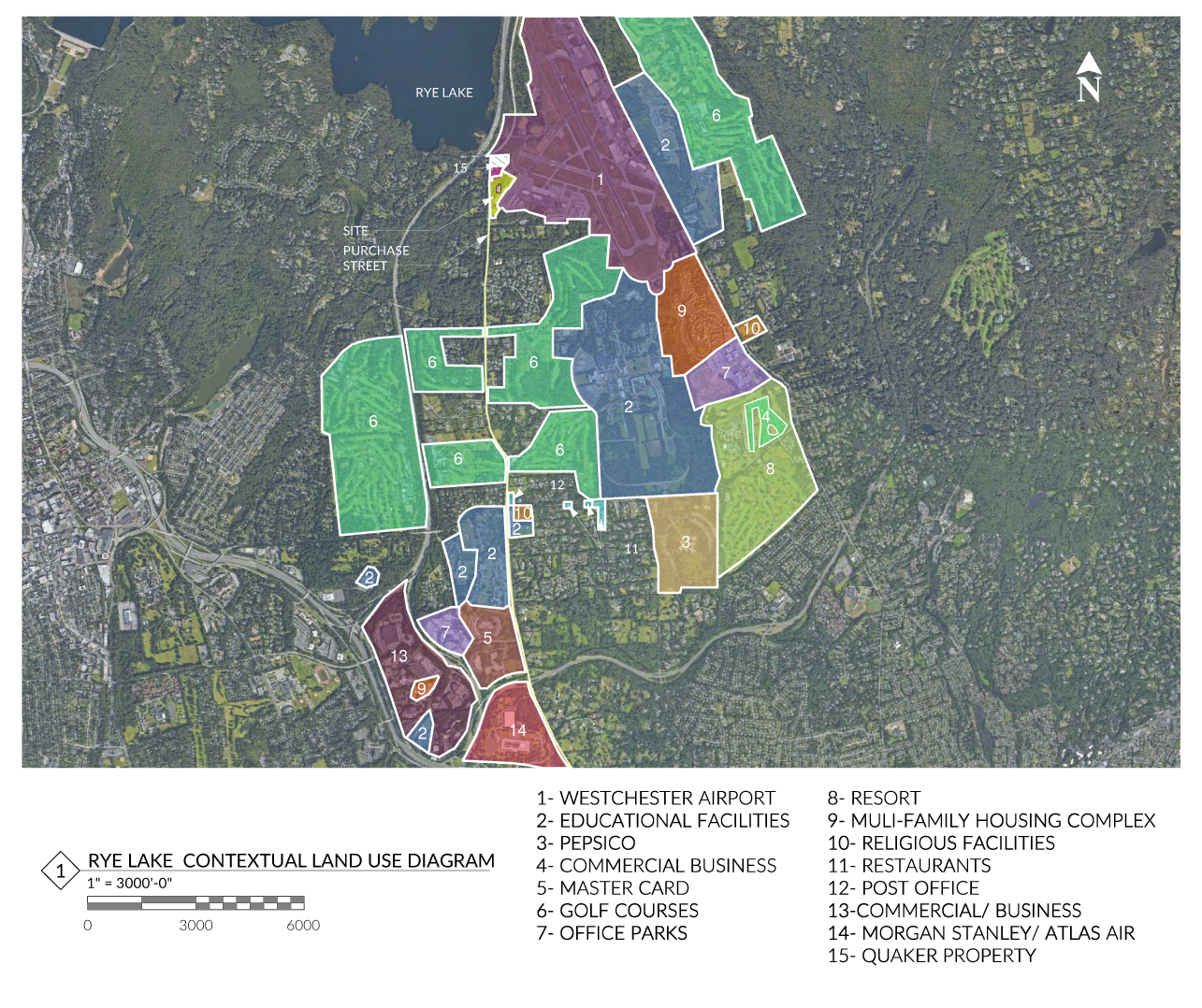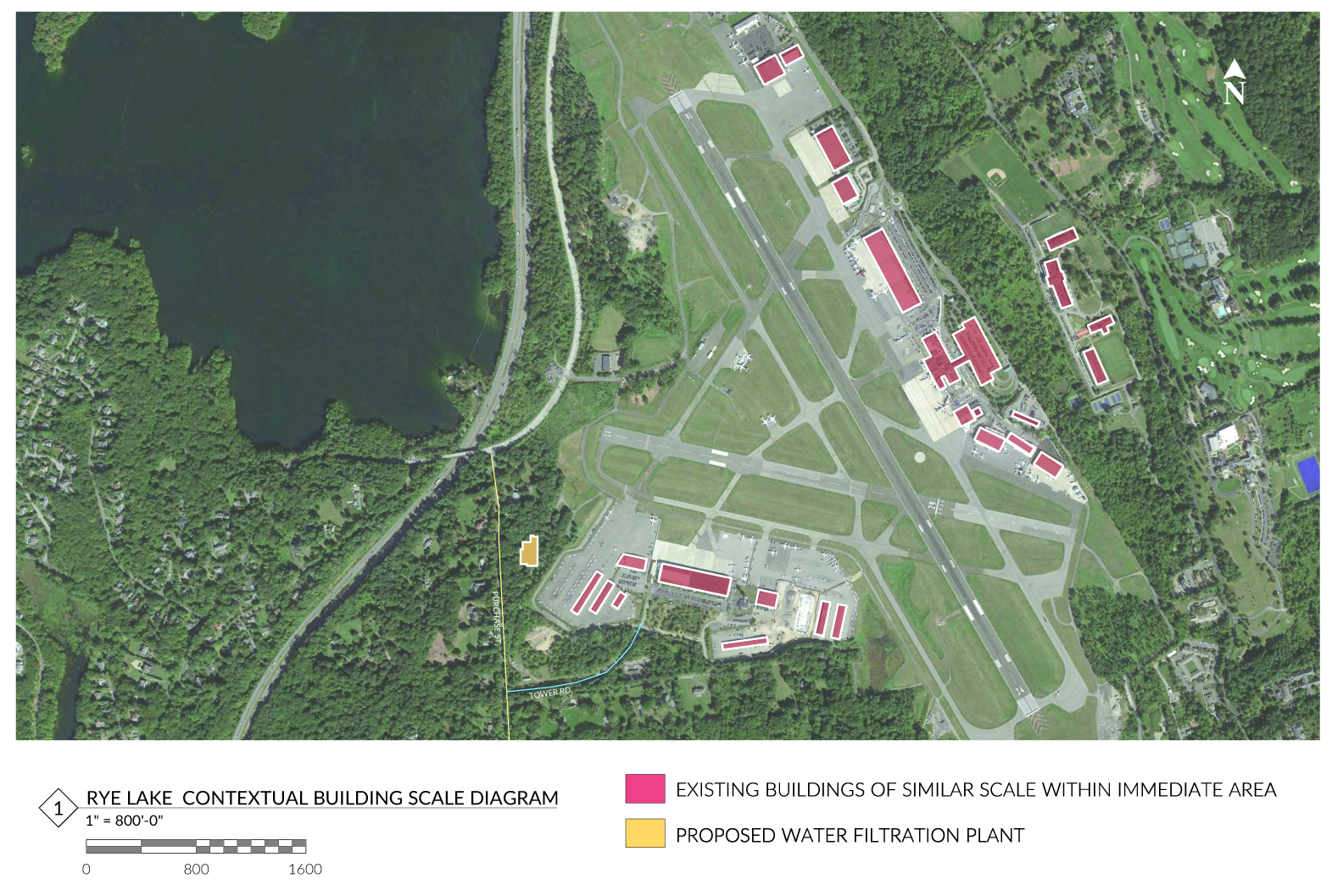WJWW supplies water to its member municipalities (the Village of Mamaroneck, the Town of Mamaroneck and the Town/Village of Harrison) and to portions of the cities of Rye and New Rochelle, serving approximately 63,000 consumers through 15,000 service connections. WJWW also provides water under negotiated water supply agreements to the Village of Larchmont, the Town of North Castle and Veolia (formerly Suez Water Westchester), which sells water to the City of Rye, Village of Rye Brook and Village of Port Chester. In all, the WJWW system provides drinking water to up to 100,000 residents and other consumers in Westchester County.
The water supplied by WJWW’s system originates as surface water in the upstate Catskill and Delaware watersheds of New York City’s water system. The water is acquired from NYC through two connections: at Shaft 22 of the Delaware Aqueduct in Yonkers, where WJWW draws treated water, and at Rye Lake in the eastern portion of the Kensico Reservoir, where another connection draws raw, untreated water.
In 2019, the United States Environmental Protection Agency cited WJWW for violation of the Maximum Contaminant Level of 0.060 parts per million (ppm) for haloacetic acids (HAA5) under the Stage 2 Disinfectants and Disinfection Byproducts Rule. The Stage 2 Disinfectants and Disinfection Byproducts Rule provides for increased public health protection against the potential risks for cancer associated with long-term exposure to high levels of disinfection by-products, including HAA5.
HAA5 includes the five haloacetic acids most commonly found in drinking water. HAA5 are a common by-product of the water disinfection process and they form when chlorine reacts with naturally occurring organic matter in untreated surface water. Chlorine is the most commonly used disinfectant among public water suppliers and is used by WJWW in its treatment protocol. Drinking water is treated by public water suppliers to kill bacteria and viruses that could cause serious illnesses. For this reason, disinfection of drinking water by chlorination is beneficial to public health. Therefore, it is necessary to filter water to reduce the level of organic matter before chlorination to control the amount of HAA5.
Water samples are taken and tested quarterly in accordance with the New York State Sanitary Code. The samples are averaged over four quarters and then that average is subject to the Maximum Contaminant Level.
Long-term exposure to high levels of HAA5 has been linked to an increased risk for cancer. The presence of HAA5 at the concentrations that had been detected in WJWW’s water system does not constitute an immediate health hazard.
WJWW will be breaking ground to construct the Water Filtration Plant on vacant property adjacent to the Westchester County Airport in the Fall of 2025, with the Plant expected to be operational by 2029. This project will serve as the means to comply with the U.S. Environmental Protection Agency’s water treatment rules and address potential public health risks. The plant will not only provide a current solution, but it will ensure WJWW’s water supply is well-positioned to meet future demands.
WJWW has explored alternatives with the New York State Department of Health, including pipelines and pump stations from other water sources, and instituted short-term measures such as a new water intake system and turbidity curtain at Rye Lake. A Water Filtration Plant was determined to be the best option and the U.S. Environmental Protection Agency, in 2019, mandated that the plant be constructed at Rye Lake.
Yes, WJWW sought to build a Water Filtration Plant when the need for one was identified in the early 1990s. Then, in 2004 when the goal could not be accomplished to the satisfaction of New York State, WJWW was ordered by the NY Court to construct a plant. Following the issuance of the Court’s order, WJWW implemented short-term water-quality protection measures for the temporary protection of its consumers. Simultaneously, WJWW also conducted an exhaustive evaluation of various long-term alternatives to filtration, which involved abandonment of its Rye Lake source in favor of a pipeline connection to a distant filtration-compliant water supply source.
When construction of a Water Filtration Plant was deemed the best option and in the best interest of the Westchester County consumers served by its water supply, WJWW purchased land in the Town of Harrison on which to build. It also took steps to comply with disinfection treatment requirements, including the use of new and modified water tanks. WJWW completed the water filtration project design in a timely manner and received approvals from the New York State Department of Health. Shovels hit the ground in 2006, but litigation and permitting issues blocked the project.
Based on the Court Order, WJWW proceeded with design and obtained the necessary approvals from the New York State Department of Health for a plant in the original location in Harrison. Local approvals were then secured from the Town/Village of Harrison Planning Board, with both parties believing the project could proceed with no further environmental review under the New York State Environmental Quality Review Act (SEQRA) since the filtration plant was mandated by the Court. Site preparation at the original project location began on August 29, 2006, but all construction was halted on September 8, 2006, when, faced with challenge by local parties, the Planning Board rescinded its original approvals and retracted its “negative declaration” determination under SEQRA. The Planning Board then undertook the role of Lead Agency under SEQRA, made a “positive determination” and required preparation of a full Environmental Impact Statement (EIS). WJWW completed its obligations as the applicant for full compliance with the SEQRA process with the issuance to the Planning Board of a final EIS in July 2008. The final EIS was never formally adopted by the Planning Board. Without completion of the SEQRA review process no further action could be taken to complete the filtration plant.
After WJWW completed the final EIS with no movement toward being able to resume the project, WJWW looked to alternatives as a possible way to meet the Court’s order. There was significant interest among the Town/Village of Harrison Planning Board and other project stakeholders in a Westchester County–lead regional water treatment and conveyance alternative. These options and other alternatives were further investigated and evaluated by WJWW over a significant length of time. Ultimately, none of the alternatives were feasible based on significant cost and increased impacts on the environment.
Without the adoption of the final Environmental Impact Statement by the Town/Village of Harrison Planning Board (as the Lead Agency), WJWW was unable to proceed to acquire the permits and approvals needed.
Several factors. First, a Federal mandate was issued by the U.S. Environmental Protection Agency in 2019 following the HAA5 violation. The United States Department of Justice on behalf of the U.S. Environmental Protection Agency informed WJWW and its member municipalities of its intention to file a complaint in Federal Court. WJWW was facing state fines under the 2004 Court Order accruing at $13,750 a day and the potential for Federal fines of $35,000 per day for noncompliance with the USEPA mandate.
Second, it’s a different project, at a different location, using a different type of filtration treatment technology. The new site is an ideal location for the Water Filtration Plant, as it is closer to the Rye Lake water supply and immediately adjacent to existing WJWW infrastructure within the Purchase Street right-of-way, and Harrison’s zoning specifically permits this type of use and facility. The initial site was nearby, but in a residential zoning district. The site of the current proposed plant is on approximately 13 acres of vacant land at the Westchester County Airport that is specifically zoned for nonresidential use.
The current proposed site was acquired from the County of Westchester in exchange for an equally sized parcel adjacent to the airport that WJWW owned, pursuant to the terms of an Exchange Contract that was executed on June 3, 2024. The land exchange transaction was completed on January 22, 2025.
WJWW and its three member municipalities commenced settlement negotiations with the Department of Justice in advance of an expected filing of a Federal Enforcement Action. The Attorney General on behalf of the New York State Department of Health joined the negotiations as a means to settle the open 2004 Court Order. A final settlement agreement was reached with the U.S. Department of Justice on behalf of the U.S. Environmental Protection Agency and New York Attorney General on behalf of the New York State Department of Health in the form of a consent decree. The consent decree contains the terms and conditions to consolidate and settle all claims in connection with filtration and treatment of surface water drawn from Rye Lake on behalf of the consumers served by the WJWW system. The consent decree, along with necessary paperwork from the State of New York to join in the omnibus settlement, was lodged with the Federal court on June 24, 2024, and became effective on September 23, 2024. In recognition of WJWW’s good faith efforts and the significant progress it has made in moving the filtration plant project forward, the settlement agreement resolved the governments’ claims for civil penalties at less than one percent of the statutory maximum penalties available under Federal and State law. The consent decree sets forth the incremental milestones to be accomplished through July 1, 2029, which is the date established for commencing operation of the Water Filtration Plant.
A portion of the Water Filtration Plant will be underground, not visible to the public, while the above-ground portion will be designed to be consistent with the character of the Purchase Street neighborhoods. The plant will be located behind an existing buffer of natural trees and vegetation and will be enhanced by landscaping and architectural elements. The site is adjacent to an active area at Westchester County Airport, which comprises commercial, business and private aviation services.
Careful consideration was made to strategically landscape the site to minimize the visual impacts of the Water Filtration Plant. Siting of the building would be such that mature trees are expected to screen the full vertical profile of the structure, including long distance views of the site. The building will be further screened by existing mature trees and a dense woodland understory, and proposed landscaping, which includes both deciduous and evergreen species.
The exterior of the building will feature granite, stone veneer and stone pier accents that match the stone walls that run along Purchase Street. Neutral or muted building colors (cadet grey and almond suede siding) were chosen for the building’s façade to help the structure blend in with the natural surroundings and a gabled roof line will be used to improve architectural quality and reduce visual monotony. There will be an 8-foot ornamental fence that will closely hug the perimeter of the driveway around the building, which is required to meet the security requirements of New York State Department of Health.



The vast majority of the Airport Site was previously cleared of trees prior to the 1940s. Over half of the second growth on the Airport Site is populated by trees which can be found on the NYSDEC invasive species list. The Water Filtration Plant project site will be cleared of 549 second-growth trees; however, 302 native trees will be restored to the Airport Site along with extensive native plantings. The dominant invasive tree species are the Norway Maple, Black Locust, Norway Spruce and Tree of Heaven. The landscape plan for the Airport Site presents an opportunity to reintroduce more than 55 native and site-appropriate species to rebuild the local ecosystem, which will restore the habitat and soil health, and outcompete invasive vegetation.


The Water Filtration Plant will be located on a portion of the Westchester County Airport’s land area lying in an SB-0 Zone (nonresidential) of the Town of Harrison. The parcel is strategically located adjacent to the existing WJWW pump station at Rye Lake near the northern end of Purchase Street, approximately 1/4 mile south of the intersection with Route 120.
The parcel is a unique combination of land uses with private aviation hangars and aircraft parking aprons immediately adjacent to the east, and airport access land and Tower Road immediately to the south.
Purchase Street between I-287 and Route 120 incorporates diverse uses from office parks at the southern end to Westchester County Airport at the northern end. The Purchase Street corridor traverses a broad range of land-use types along a four-mile segment, including single-family neighborhoods, golf courses, mixed-use resort property, religious institutions and a range of educational uses in varying scales.
The Water Filtration Plant building footprint of approximately 34,000 square feet (sf) equates to a smaller range of hangar footprints typical on the airport property. Larger flight operations/hangar facilities at the airport range from approximately 60,000 sf to more than 154,000 sf. Smaller airport structures and hangars range from approximately 10,000 sf to 60,000 sf. Golf course clubhouses, religious institutions and educational facilities can be found in a wide range of footprints along the Purchase Street corridor, ranging from approximately 8,000 sf to 30,000 sf. Single-family homes represent a wide diversity of footprints from approximately 2,500 sf to 10,000 sf and larger. The proposed Water Filtration Plant building consists of an above-ground area comprising a main floor and partial second levels. A significant portion of the plant’s process area is below ground level, in some areas up to two stories down.
As a result of delays in the environmental review process as well as other factors outside of the control of WWW, the Water Filtration Plant timeline has been pushed out five years from the original plan and the Plant is now expected to go online in mid-2029. Due to COVID, supply chain disruptions and significant inflationary pressures over the past several years, the cost of materials and labor associated with the Project have increased dramatically. A revised cost projection is being developed to fully reflect current market conditions as well as the anticipated change in market conditions over the duration of the Project.
On August 12, 2025, the WJWW Board of Trustees awarded the contract to build the Rye Lake Water Filtration Plant to Yonkers Contracting Company, Inc. in the amount of $172.8 million, with the total cost of the project currently projected to be approximately $205 million.
The cost of building the plant will be funded through a combination of bonds issued by WJWW’s member municipalities and, to the extent available, grants and subsidized loans. Debt service is expected to be supported through the water rates paid by WJWW consumers. On Dec. 12, 2023, WJWW was awarded a $30 million grant through the New York State Intermunicipal Grant Program, funded by the Environmental Bond Act, toward construction of the plant.
Historically, water has been a significantly underpriced commodity. Currently, the average cost to consumers of one gallon of WJWW fully treated water is a little over $0.012 per gallon. The Water Filtration Plant Project is likely to raise this cost to around $0.020 per gallon five years from now. In comparison to bottled water, which sells for upward of $1.00 per gallon, WJWW water will remain relatively low cost.
On May 26, 2023, the New York City Department of Environmental Protection (NYC DEP) issued approval of WJWW’s Stormwater Pollution Prevention Plan. The NYC DEP approval demonstrates WJWW compliance with strict NYC DEP rules and regulations for the protection of Kensico Reservoir/Rye Lake and its watershed, and that the construction of the filtration plant at the Airport site will have no stormwater impact on downstream properties. Kensico Reservoir/Rye Lake is a water source for WJWW, and as such, WJWW is keenly aware of the necessity of protecting the Kensico Reservoir Watershed. WJWW currently has water treatment facilities and other facilities on the Kensico Reservoir Watershed, and we have operated within the Watershed, without incident, for 75 years. To view the NYC DEP Stormwater Pollution Prevention Plan Determination, click here.



